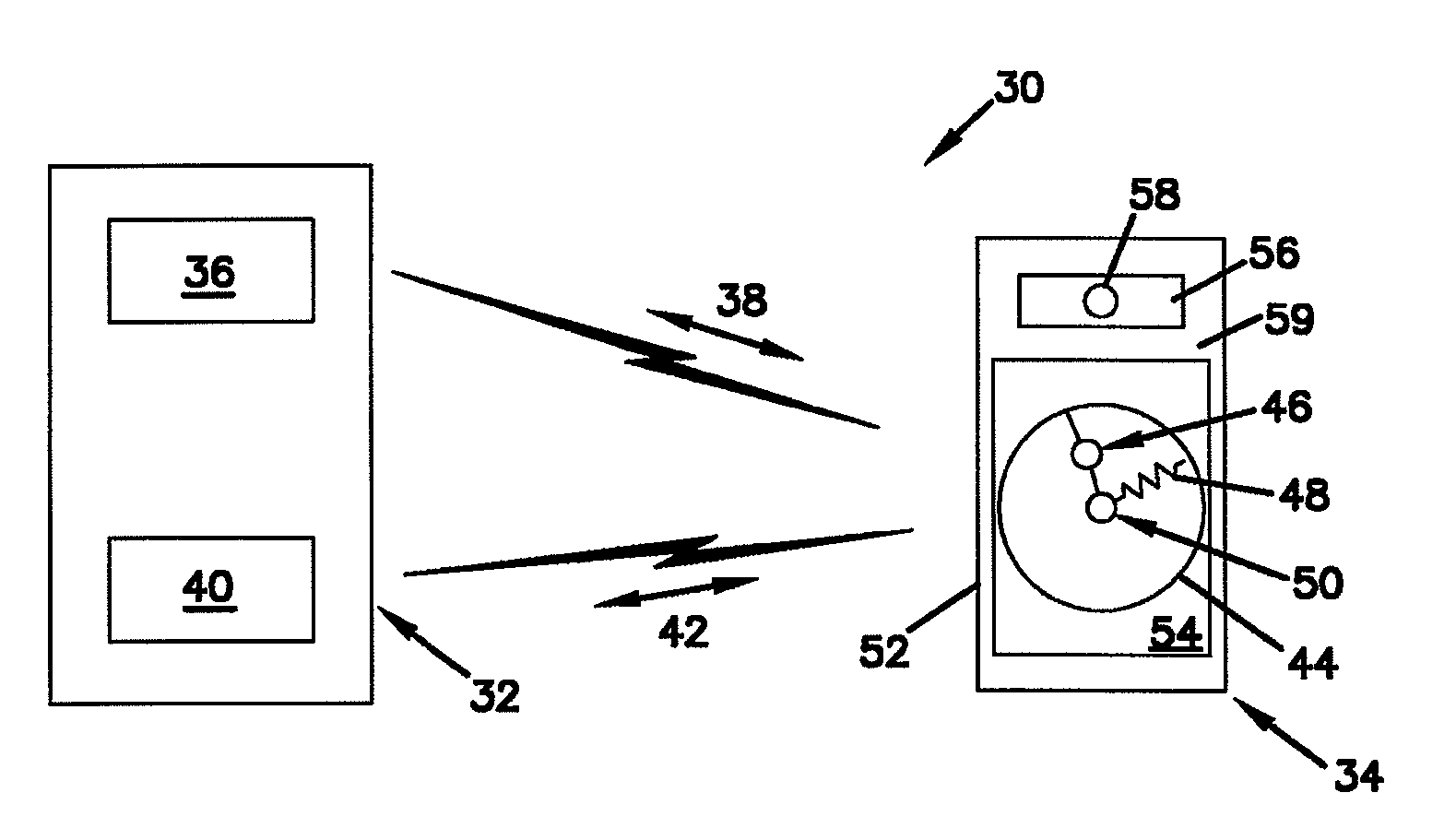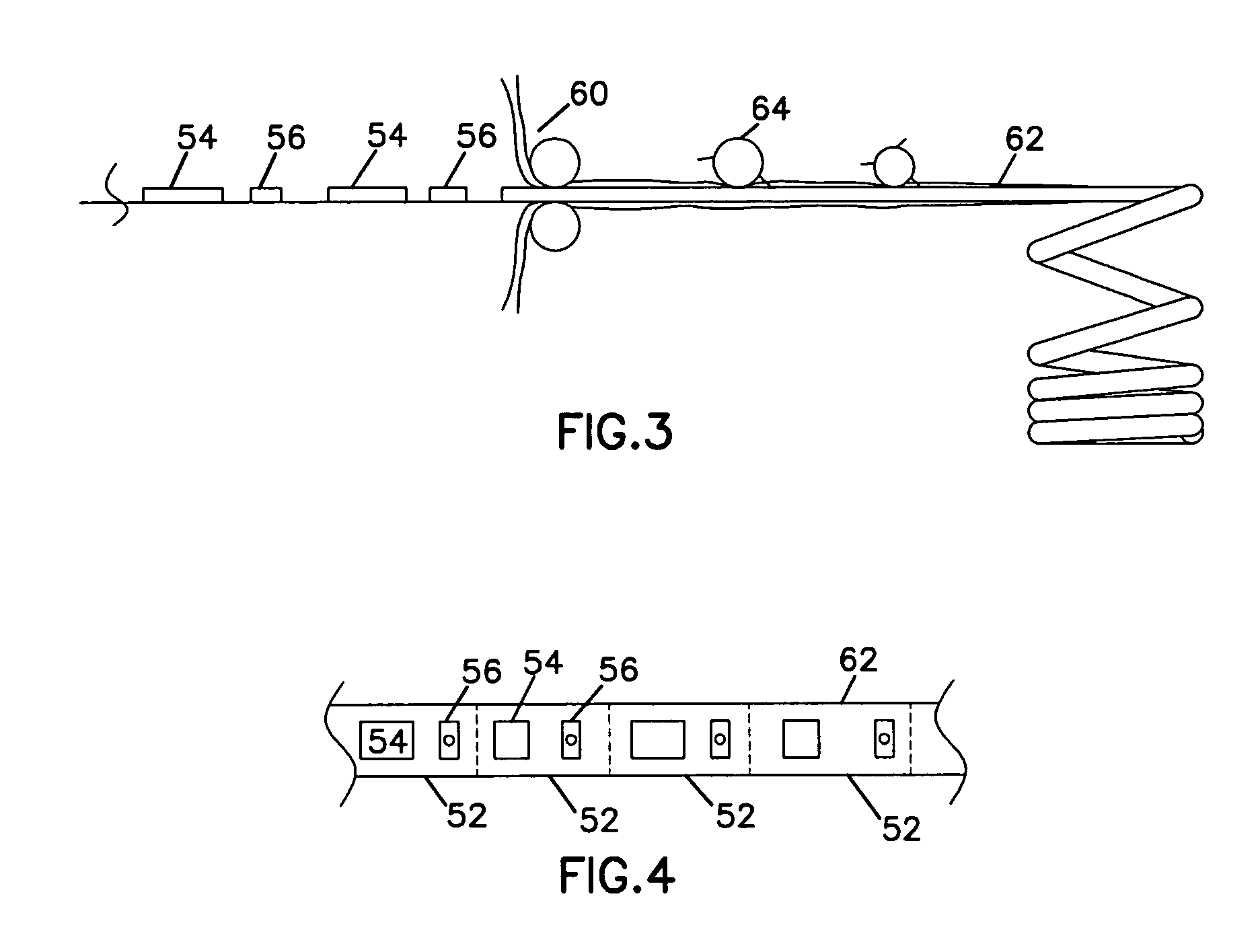Radio frequency animal tracking system
a radio frequency identification and tracking system technology, applied in the direction of electrical signalling details, burglar alarm mechanical actuation, instruments, etc., can solve the problems of inefficient and costly manufacturing and distribution process, inability to effectively query and retrieve identification numbers, complex multi-layered and multi-step process of manufacture and distribution, etc., to improve the real-time performance of the transponder
- Summary
- Abstract
- Description
- Claims
- Application Information
AI Technical Summary
Benefits of technology
Problems solved by technology
Method used
Image
Examples
first embodiment
[0049]Referring to FIG. 2, an RFID system 30 according to the present invention is shown. In the depicted embodiment the RFID system 30 includes a base station 32 and a transponder 34. The base station 32 includes a first device 36 for transmitting and receiving signals at a first frequency 38 and a second device 40 for transmitting and receiving signals at a second frequency 42. In an embodiment, the first frequency 38 can be the standard frequency of 134.2 kHz and the second frequency 42 can be a higher frequency than the first frequency 38. The transponder 34 includes an antenna, e.g., a wire loop antenna 44, that is configured to receive and transmit on the first frequency 38. The depicted wire loop antenna 44 is made of metal and also functions as an inductor to generate an electrical current for powering a first semiconductor chip 46. The first semiconductor chip 46 can be programmed to retrieve a stored identification number and transmit that identification number back to the...
embodiment 130
[0081]As shown in FIG. 10, a string of tags 122 formed on substrate 100 is maintained in a continuous strip 124, which may be fanfolded, rolled or otherwise packaged for sending to a producer, an auction lot, or other location within the animal production process. In an embodiment, tags 122 in strip 124 are inserted within a printing and encoding device 130 that may be positioned chute or corral side for ease of operation. Each of the tags 122 is pre-molded and encoded with a government issued identifier. Each of the tags 122 also includes area 128 for printing, embossing or otherwise marking with a local or management identifier. Area 128 allows a printing head 134 of chute side printer and encoder 130 to be used to apply a specific marking immediately prior to tag 122 being attached to the animal. While a novel printer / encoder embodiment 130 is described and shown herein, it is anticipated that tags 122 and strip 124 may be used with conventional printers currently in use for prin...
PUM
 Login to View More
Login to View More Abstract
Description
Claims
Application Information
 Login to View More
Login to View More - R&D
- Intellectual Property
- Life Sciences
- Materials
- Tech Scout
- Unparalleled Data Quality
- Higher Quality Content
- 60% Fewer Hallucinations
Browse by: Latest US Patents, China's latest patents, Technical Efficacy Thesaurus, Application Domain, Technology Topic, Popular Technical Reports.
© 2025 PatSnap. All rights reserved.Legal|Privacy policy|Modern Slavery Act Transparency Statement|Sitemap|About US| Contact US: help@patsnap.com



